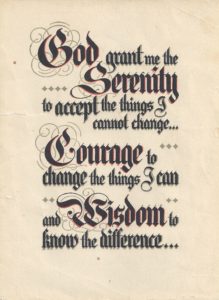More Equal Therapies than Others, Part 1

In the classic novella, Animal Farm, by George Orwell, the animals of Manor Farm revolted and drove the drunken and irresponsible farmer Mr. Jones from the farm. They renamed it “Animal Farm” and adopted the Seven Commandments of Animalism, the most important of which was the seventh: “All animals are equal.” Eventually the pigs cemented their role as the leaders of Animal Farm, and this commandment was modified to say: “All animals are equal, but some animals are more equal than others.” Barry Duncan adroitly applied this example of double-speak in his discussion of those who apply the medical model of “diagnosis plus prescriptive treatment equals symptom amelioration” to declare that some psychotherapies were more equal than others.
Two other articles, “The Dodo Bird Effect” and “Another Brick in the Wall” explored Duncan’s argument for the power of common factors in psychotherapy and the dodo bird effect, an alternate way of understanding the process of therapeutic change from the dominant medical model of therapeutic change described above. He developed this position in: “The Legacy of Saul Rosenzweig: The Profundity of the Dodo Bird” and a book he coauthored: The Heart & Soul of Change.” Here I want to explore how the Orwellian sense that some therapies are more or less equal than others runs wild in addiction treatment.
The National Institute on Drug Abuse (NIDA) defined addiction as “a chronic, relapsing brain disease” because drugs changed the brain—its structure and how it worked. Here is a short YouTube video of the Director of NIDA, Nora Volkow, discussing this view of addiction. This definition was purely a physiological, biomedical understanding of addiction. Philosophically, it also seems Volkow assumed there is no mind; that human traits like “free will” were products of the biology of the brain. Note where she said “free will” was a product of the biology of the brain.
As in medical practice, addiction treatments are quantified according to an evidence-base of effectiveness. Here, the buzzword is “evidence-based treatment.” NIDA has a listing of “Evidence-Based Approaches to Drug Addiction Treatment,” which it categorized as “Pharmacotherapies” and “Behavioral Therapies.” The NIDA introduction said the section “presents examples of treatment approaches and components that have an evidence base supporting their use.” One of the behavioral therapies NIDA listed as “effective in addressing substance abuse,” was “12-Step Facilitation Therapy” (TSF).
12 Step-Based “Treatment”
This 12-Step-based treatment approach was developed by Joseph Nowinski, a clinical psychologist as part of the Project MATCH study into the effectiveness of three different perspectives on how to treat alcohol use disorders (then described as alcohol abuse and alcohol dependence in the DSM, the psychiatric Diagnostic and Statistical Manual). In his book, If You Work It, It Works!, Nowinski said many academic researchers were highly skeptical that TSF would work at all, as A.A. and the Twelve Step approach was poorly understood. “Many academic researchers inclined to think of it more as a cult or quasi-religion than a serious programmatic approach to recovery from addiction.”
The two other interventions, Cognitive Behavioral Therapy (CBT) and Motivational Enhancement Therapy (MET) had been extensively studied. But Twelve-Step interventions had not been the subject of significant, rigorous research. So Nowinski developed TSF, a psychosocial treatment manual based on engaging the individual in 12 Step support groups such as Alcoholics Anonymous (A.A.).
In 1997 published results from the MATCH Research Group showed that all three interventions (CBT, MET and TSF) were effective in reducing drinking and increasing abstinence after treatment. One year after completing treatment those who were in the outpatient section of MATCH were sober over 80% of the time. And TSF was found to be equally effective for individuals who had been diagnosed as an alcohol abuser rather than as alcohol dependent.
These findings were so unexpected that some long-standing critics of AA and its Twelve Step program went so far as to question whether the MATCH data were somehow falsified. Of course, nothing could be further from the truth. The reality, rather, was what some skeptics could not abide: the idea that the Twelve Step approach works.
Nowinski said his goal in writing If You Work It, It Works was to make information on the effectiveness of Twelve Step recovery, now documented in academic journals, available to the general public. His goal was “to stand for the Twelve Step model in the face of long-standing and unchallenged criticism and skepticism, much of which is not based in fact.” Equally important, he hoped that people on the fence about going to an A.A. meeting “will benefit from learning about the science (as opposed to the myths) of Twelve Step recovery.”
Nowinski referred to a long-standing bias against the Twelve Step approach to recovery. He said it was regularly portrayed as a quasi-religious approach, and then rejected because it is not a structured treatment approach. Therefore it lacked a clear demonstration of its scientific, evidence-based effectiveness. If an addiction treatment approach, like TSF, used the 12 Steps or actively encouraged clients to participate in 12 Step groups like Alcoholics Anonymous (A.A.) or Narcotics Anonymous (N.A.), it was often judged to be “a less equal treatment” than others. An article by Laurel Sindewald for The Fix, “AA Is not Evidence-Based Treatment,” illustrates this bias.
The author said she had previously done a literature review that found insufficient evidence to support the use of 12-step groups as treatment, so she was surprised the Surgeon General included TSF as an evidence-based behavioral treatment for addiction in Facing Addiction in America. She admitted to a personal bias, which apparently was against the spirituality of 12-step groups and what she referred to as “12-step philosophy.” It seems that since TSF encouraged participation in 12-Step self-help groups, it was suspect as a “less equal” treatment approach, because it retained “the spiritual emphasis of 12-step philosophy.” However, she would “set aside her bias” in her assessment of TSF, in order to give it a scientific, objective assessment. But that does not seem to have been the case.
Sindewald noted where the Surgeon General’s Report classified TSF as a “professional behavioral treatment,” but then immediately asked: “How could a professional medical treatment be based on a definition of addiction as a spiritual disease?” She stated (without any supportive citation) that Twelve-Step philosophy stipulated that addiction was a spiritual disease born of defects of character; and that 12-step groups were the only cure. She later compared Twelve-Step literature to religious literature like the Bible and the Qur’an and contrasted Twelve-Step philosophy with medical science. She gave an extended quote from the A.A. “Big Book” of Alcoholics Anonymous, which she said represented Twelve-Step philosophy saying it can never be wrong. Her bias against spiritual/religious philosophy was all through her critique.
The A.A. pamphlet “How AA Members Cooperate with Professionals,” stated that A.A. is not in competition with anyone. “Our ability to help other alcoholics is not based on scientific or professional expertise.” Unpacking principles articulated in AA’s Twelve Traditions, the pamphlet also said: “A.A. is not allied with any sect, denomination, politics, organization or institution; does not wish to engage in any controversy; neither endorses nor opposes any causes.” In his essay on Tradition Six in Twelve Steps and Twelve Traditions, Bill W. gave a brief history of early A.A. including attempts to institute A.A. hospitals and get involved in education. He noted where these activities raised confusion. “Did A.A. fix drunks or was it an educational project? Was A.A. spiritual or was it medical? Was it a reform movement?”
These adventures implanted a deep-rooted conviction that in no circumstances could we endorse any related enterprise, no matter how good. We of Alcoholics Anonymous could not be all things to all men, nor should we try.
In the same chapter of the A.A. Big Book, which Sindewald cited and linked, “How It Works,” there is a discussion of resentment being the “number one” offender, destroying more alcoholics than anything else. “From it stem all forms of spiritual disease, for we have been not only mentally and physically ill, we have been spiritually sick. When the spiritual malady is overcome, we straighten out mentally and physically.” So there is an understanding of alcoholism as a spiritual, mental and physical illness/disease.
Also in that chapter you will find the 12 Steps described as a suggested program of recovery. “The principles we have set down are guides to progress. We claim spiritual progress rather than spiritual progression.” So it seems that AA does not present itself as the only cure; nor does it describe alcoholism merely as “a spiritual disease born of defects of character.”
A clear distinction by the author between TSF, A.A., and rehab programs using the 12-Steps isn’t maintained in her critique. In her article for The Fix, she said she used “12-step approaches” to refer to all 12-step self help groups, all 12-step-based rehab programs and TSF. However, in another article she wrote previously for Handshake Media (linked as her literature review), she said: “TSF is distinct from AA and other 12-step support groups.” Yet in her conclusion for “AA Is not Evidence-Based Treatment” Sindewald said “after exhaustive research” she could assert with confidence that 12-step approaches—including TSF—were not evidence-based treatments. She called for the reallocation of funds away from these approaches to those “that can be studied rigorously and without such crippling methodological limitations.”
With regard to A.A .and other 12 Step groups, she was right when she said they were not treatment approaches to addiction recovery. A.A. is not developed as a treatment approach and doesn’t claim to be a treatment approach. The A.A. website said: “Alcoholics Anonymous is an international fellowship of men and women who have had a drinking problem.” It is also self consciously nonprofessional, stating in Tradition Eight, “Alcoholics Anonymous should remain nonprofessional.” As fellowship organizations, A.A. and other 12-Step self-help groups are not structured in ways that can be easily studied by researchers who want to assess their effectiveness within a structured medical model of therapeutic change.
But Twelve Step Facilitation is considered to be a treatment approach. According to the NIDA description of “12-Step Facilitation Therapy,” TSF is a manual-based, structured treatment approach. It is “designed to increase the likelihood of a substance abuser becoming affiliated with and actively involved in 12-step self-help groups, thereby promoting abstinence.” And TSF is listed by NIDA as an evidence-based treatment approach, the same organization, by the way, that Sindewald referenced as defining addiction as a brain disease. Apparently NIDA doesn’t agree with her that TSF is not an evidence-based treatment approach.
It seems Sindewald’s failure to acknowledge the difference of A.A. and other 12-Step groups from the various addiction treatment approaches that apply “Twelve-Step philosophy” was intentional. It sets up a straw man argument that illegitimately transfers a critique of the TSF treatment approach onto 12-Step groups. It also seems that Sindewald’s claim to have set aside her bias while she examined Twelve Step treatment philosophy and TSF was not true.
See Part 2 for a discussion of the limitations of “evidence-based” models of change with substance use disorders and how a common factors approach to therapeutic change is consistent with the fellowship of 12 Step-based groups.










